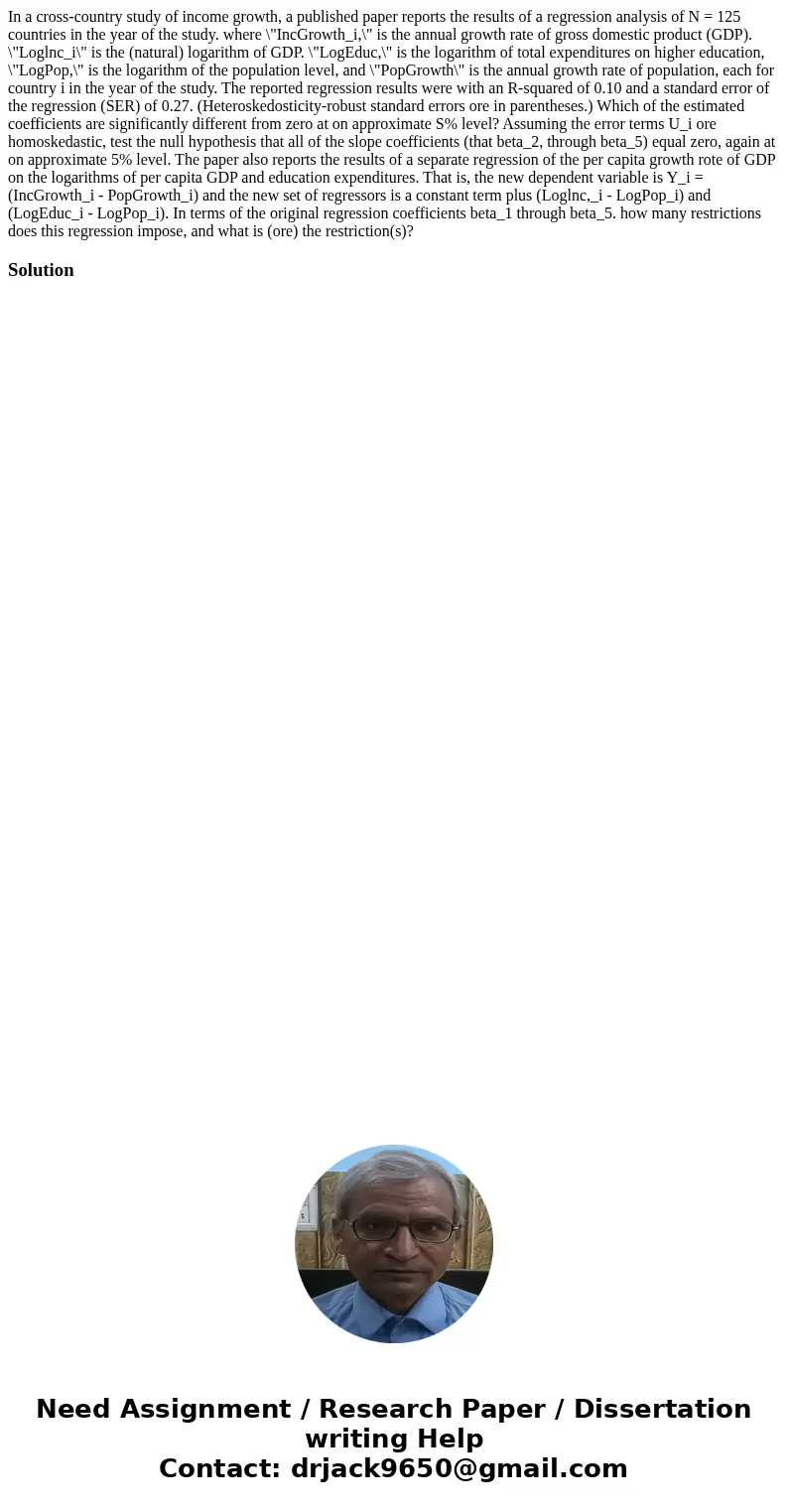In a crosscountry study of income growth a published paper r
In a cross-country study of income growth, a published paper reports the results of a regression analysis of N = 125 countries in the year of the study. where \"IncGrowth_i,\" is the annual growth rate of gross domestic product (GDP). \"Loglnc_i\" is the (natural) logarithm of GDP. \"LogEduc,\" is the logarithm of total expenditures on higher education, \"LogPop,\" is the logarithm of the population level, and \"PopGrowth\" is the annual growth rate of population, each for country i in the year of the study. The reported regression results were with an R-squared of 0.10 and a standard error of the regression (SER) of 0.27. (Heteroskedosticity-robust standard errors ore in parentheses.) Which of the estimated coefficients are significantly different from zero at on approximate S% level? Assuming the error terms U_i ore homoskedastic, test the null hypothesis that all of the slope coefficients (that beta_2, through beta_5) equal zero, again at on approximate 5% level. The paper also reports the results of a separate regression of the per capita growth rote of GDP on the logarithms of per capita GDP and education expenditures. That is, the new dependent variable is Y_i = (IncGrowth_i - PopGrowth_i) and the new set of regressors is a constant term plus (Loglnc,_i - LogPop_i) and (LogEduc_i - LogPop_i). In terms of the original regression coefficients beta_1 through beta_5. how many restrictions does this regression impose, and what is (ore) the restriction(s)?
Solution

 Homework Sourse
Homework Sourse